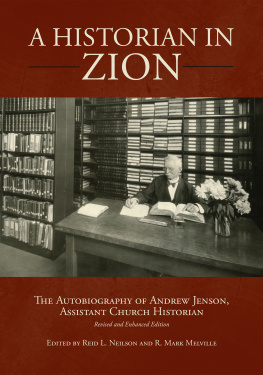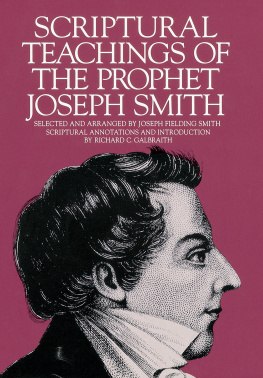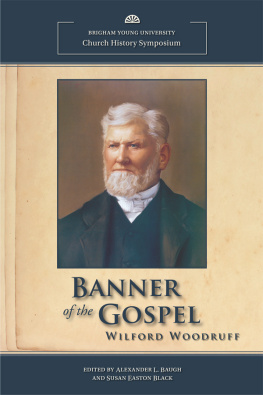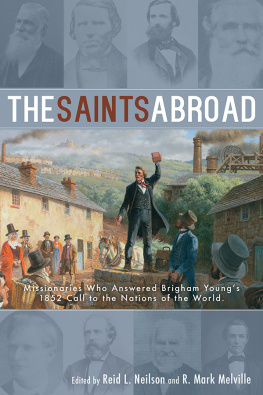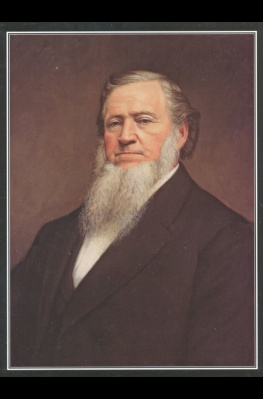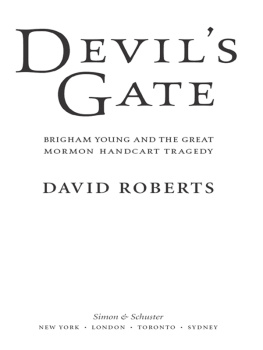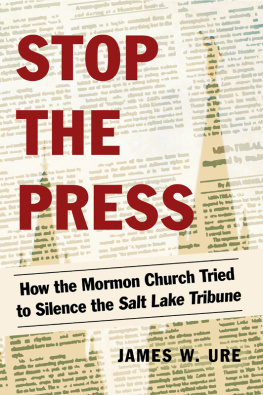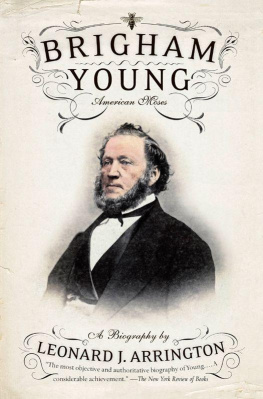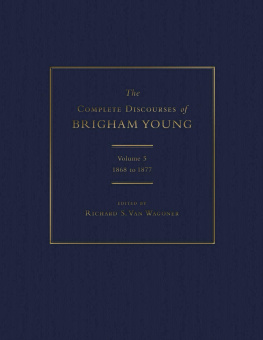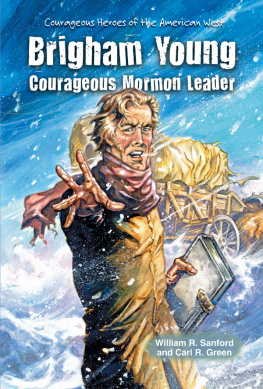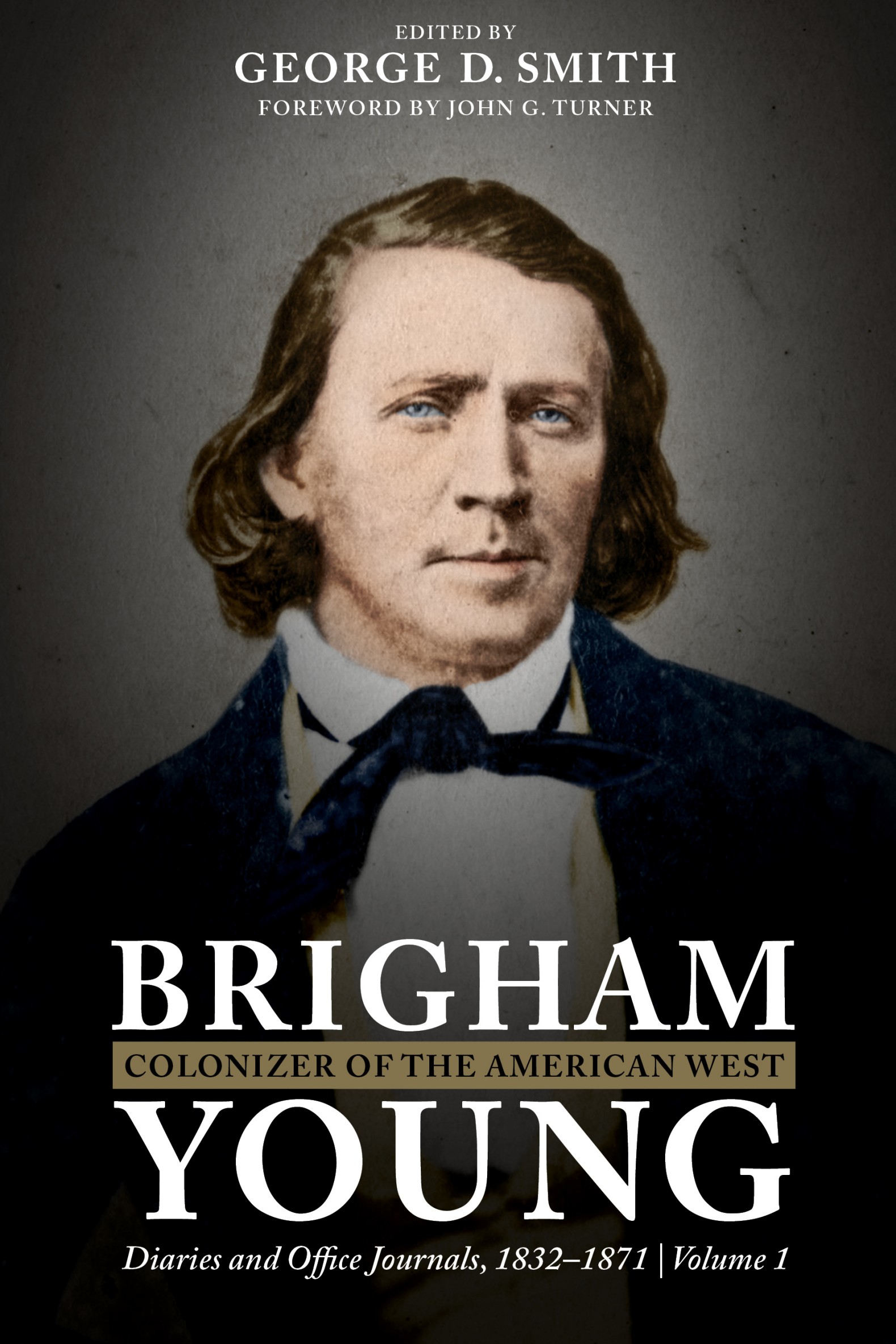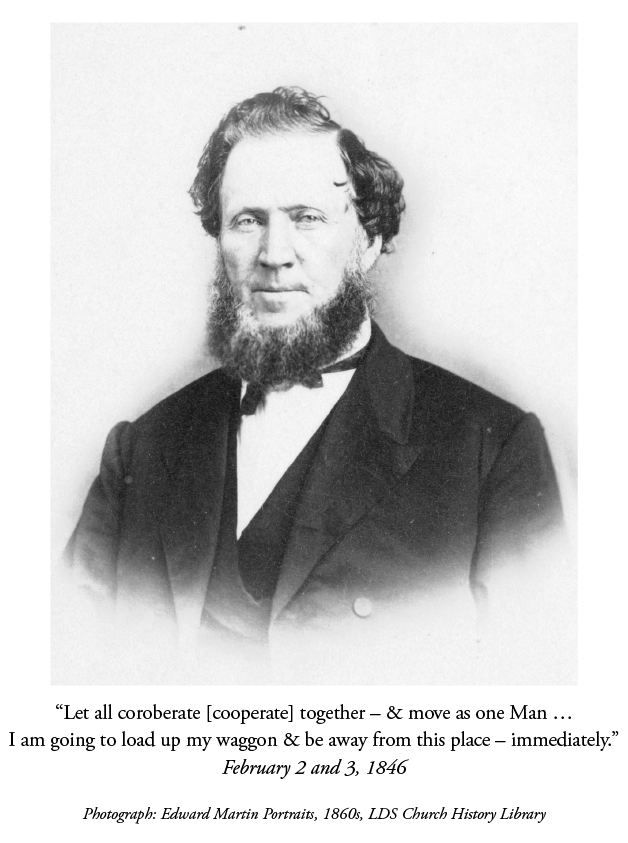Brigham
Yo u n g
Co l o nizer of the A mer i c an West
Diaries and Office Journals, 18321871
Volume 1
edited by
Georg e D . Smith
with a foreword by
John G. Turner
Signature Books | 2021 | Salt Lake City
BRIGHAM YOUNG, COLONIZER OF THE AMERICAN WEST
DIARIES AND OFFICE JOURNALS, 18321871
Copyright 2021 Signature Books Publishing, LLC. All rights reserved. www.signaturebooks.com. Signature Books is a registered trademark of Signature Books Publishing, LLC. Printed domestically on paper certified by the Sustainable Forestry Initiative.
Design and typographical composition by Jason Francis.
First edition | 2021
library of congress cataloging-in-publication data
Names:Young, Brigham, 18011877, author. | Smith, George D. (George Dempster), editor. | Turner, John G., writer of foreword.
Title:Brigham Young, colonizer of the American West : diaries and office journals, 18321871 / George D. Smith, editor ; with a foreword by John G. Turner.
Description: First edition. | Salt Lake City : Signature Books, 2021. | Includes bibliographical references and index. | Contents: Pre-Utah diaries, 183246 Utah office journals, 184957 Utah office journals, 185871. | Summary: Examining Brigham Youngs legacy requires an understanding of his raw ambition and religious zeal. A formidable leader in both his church and country, Youngs abilities coincided with the colonizing zeitgeist of nineteenth-century America. Thus, by 1877, some 400 Mormon settlements spanned the Western frontier from Salt Lake City to outposts in Idaho, Nevada, Arizona, Wyoming, and California. As prophet of the LDS Church and governor of the proposed State of Deseret, Young led several campaigns for Utah Statehood while defending polygamy and local sovereignty. His skillful and authoritarian leadership led historian Bernard de Voto to classify him as an American genius responsible for turning Joseph Smiths visions into the seed of life. Youngs diaries and journals reveal a man dedicated to his church, defensive of his spiritual and temporal claims to authority, and determined to create a modern Zion within the Utah desert. Editor George D. Smiths careful organization and annotation of Youngs personal writings provide insights into the mind of Mormonisms dynamic church leader and frontier statesman Provided by publisher.
Identifiers:LCCN 2020047510 (print) | LCCN 2020047511 (ebook) |
ISBN 9781560852742 (set) | ISBN 9781560853930 (v. 1 ; ebook) |
ISBN 9781560853947 (v. 2 ; ebook)
Subjects:LCSH: Young, Brigham, 18011877Diaries. | Church of Jesus Christ of Latter-day SaintsPresidentsDiaries. | Church of Jesus Christ of Latter-day SaintsHistory19th century. | West (U.S.)History19th century. |
UtahHistory19th century.
Classification:LCC BX8695.Y7 Y67 2021 (print) | LCC BX8695.Y7 (ebook) |
DDC 289.3092 [B]dc23
LC record available at https://lccn.loc.gov/2020047510
LC ebook record available at https://lccn.loc.gov/2020047511
To those pioneers
who faced uncertainty with a plan
and made it work.
Foreword
John G. Turner
I have not the advantage of language, Brigham Young once commented. He added that he had received his schooling not from teachers and books, but in the fields and forests and workshops of western New York. His accomplishments belie his scanty formal education. After Joseph Smiths murder, he persuaded thousands of Latter-day Saints to accept his leadership, led them out of Nauvoo, Illinois, and to the Valley of the Great Salt Lake, and became the first governor of the Utah Territory. Despite intense conflicts with US officials and politicians, he oversaw the establishment of a thousand-mile string of settlements stretching from present-day southern Idaho to outside Los Angeles.
During his lifetime, Young generated a mountain of documents: thousands of letters, transcripts of countless sermons, and a host of business files. The sheer volume of verbiage presents a challenge for anyone wishing to penetrate to the marrow of the man or wishing to establish a basic chronology of his activities. George D. Smiths edition of Youngs diaries and office journals is thus a gift to anyone doing research on Young or interested in the early history of the Church of Jesus Christ of Latter-day Saints and Utah Territory. While most of the documents are open to researchers at the Church History Library and other repositories, a quick glance at the contents of this edition demonstrates the essential nature of editor Smiths work.
As a diarist, Young was no Wilford Woodruff. He lacked his fellow apostles clear penmanship and literary persistence. Even though Young was not one of nineteenth-century Mormonisms great journal keepers, his diaries, office journals, and travelogues comprise a rich account not only of his life, but of the church and territory he governed. And precisely because Young lacked the advantage of language, his diaries become more valuable in the capable hands of George D. Smith, who for decades has made documents of early Mormon history accessible to scholars and readers.
This two-volume edition begins with Youngs early handwritten diaries, which feature his phonetic and irregular spelling and his challenging script. They are also full of often obscure places and names that Smiths painstaking research clarifies. Oftentimes, Young provides a terse account of his missionary stops at schoolhouses, taverns, and private homes. On other occasions, however, Smith helps us accompany Young on joyful reunions with family and into the intimate spiritual world of his dreams: I imbraced hir [his wife Mary Ann Angell Young] in my arms, Young wrote during his mission to England, and kised 2 or 3 times and asked hir whare my dear children was. Several years later, in Nauvoo, Young dreamed that he and his wife were traveling in a carriage during a storm. Joseph Smith was on the backseat with Mary Ann and whispered to hir said it was wright [right] if she was a mind to. Was Smith proposing marriage in this dream? Nothing more past between them, Young stated.
Certainly, there are times one wishes that Young and his clerks had written more than they did. In Youngs handwritten diaries, there are referencessometimes quite crypticto his plural marriages. These document the growth of Youngs family but provide relatively little insight into how he understood the developments. Also, in the pages of his diary, Young rarely gives full vent to his emotions. For instance, one of the most traumatic stretches of Youngs life began in July 1844. While in New England, he started for Boston having heard of Bro J[oseph] & H[yrum] Smith[]s de[a]th. Young did not record his emotional tumult, simply that he came to Lowel[l] sta[ye]d all night. Wilford Woodruff wrote about Youngs arrival in Boston the next night, Br Young took the bed, and I the big Chair, and I here veiled my face and for the first time gave vent to my grief and mourning for the Prophet. Young, by contrast, simply recorded that he met Woodruff and Heber C. Kimball. Did he, like Woodruff, bathe himself with tears? Five years later, Young told a meeting that he felt then as I never felt in my life but never cryed. Instead, his head felt so distressed [that he] thought it would crack. Young was more a talker and a doer than a writer.
As the years passed, Young rarely put pen to paper and instead relied on clerks to maintain his journal. The practice was sometimes regular and systematic, at other times episodic. Different clerks created a variety of accounts, some of which overlap chronologically. In this edition, Smith assembles those many journals and travelogues into a single chronological account that documents the many facets of Youngs church presidency and management of civil affairs. Many days included a mixture of business, ecclesiastical affairs, theological discussions, and military and political affairs. On one occasion, Youngs clerk found the church president in his office alone at nine oclock in the morning. Young seemed like a man wearied with a hard days work. The previous day he had presided over thirty-five marriage sealings and must have spoken over 20,000 words. Not all of Youngs words on that and other occasions found their way into Youngs office journals, but there are at least short summaries of countless conversations and meetings for a running log of Youngs leadership.


